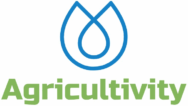Aquaponics is a form of urban agriculture that combines aquaculture (raising fish) with hydroponics (cultivating plants in water without soil) to create a symbiotic, sustainable ecosystem. In an aquaponics system, fish are raised in a tank or pond, and the water from their habitat is used to nourish and hydrate the plants growing nearby. The plants, in turn, filter and clean the water, which is then returned to the fish. This continuous cycle allows both the plants and the fish to thrive, while also conserving water and reducing the need for chemical fertilizers.
There are several components that make up an aquaponics system, including:
1. Fish tank or pond:
This is the foundation of the aquaponics system, and the size and type of tank or pond will depend on the type and number of fish being kept. Common choices for aquaponics fish include tilapia, bass, and catfish, although many other species can also be used.
2. Grow beds:
Grow beds are where the plants are grown, and it can be made of various materials, such as wood, plastic, or concrete. The grow bed can be designed in a variety of shapes and sizes, and it should be located near the fish tank or pond to allow for easy water circulation.
3. Water pump:
Water pumps are used to circulate the water between the fish tank and the grow bed. The water pump should be powerful enough to move the water efficiently, but not so strong that it disturbs the fish or damages the plants.
4. Piping or tubing:
This is used to transport the water from the fish tank to the grow bed and back again. The piping or tubing should be sturdy and resistant to wear and tear, and it should be sized appropriately for the flow rate of the water pump.
Other optional components of an aquaponics system may include a biofilter to break down the fish waste, a sump tank to hold excess water, and a solar panel or other source of energy to power the pump.
There are several different types of aquaponics systems:
1. Media-based system
A grow media, such as gravel or perlite, is used to support the plants.
2. Nutrient Film Technique (NFT) system
NFT systems use a thin film of nutrient-rich water to feed the plants.
3. Deep Water Culture (DWC) system
In a DWC system, a floating raft is used to support the plants and deliver oxygen to the roots.
Aquaponics systems can be used to grow a wide variety of plants, including leafy greens, herbs, tomatoes, peppers, and even flowers. The choice of plants will depend on the type of system being used, as well as the climate and other local conditions.
Aquaponics systems offer numerous benefits, including reduced water usage (compared to traditional agriculture), improved plant growth, and the ability to grow a variety of crops year-round. They also have the potential to increase food security, reduce the environmental impact of traditional agriculture, and create new job opportunities and support small businesses. If you’re interested in urban agriculture, sustainability, and creativity, aquaponics might be the perfect hobby or business venture for you.





